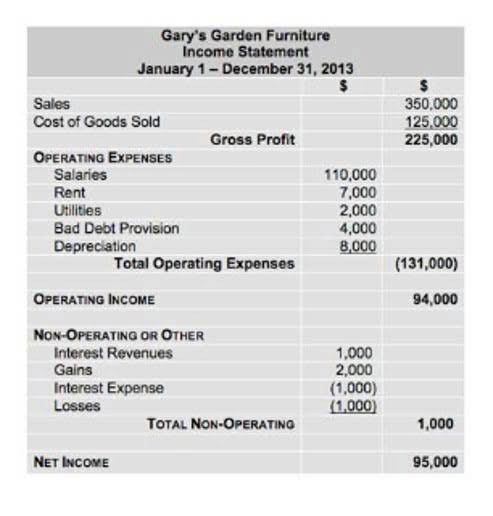
Tallying up the profits and losses of the business requires an accounting system, which must be incorporated into the partnership agreement. A general partnership is an association in which each partner is personally liable to the partnership’s creditors if the partnership has insufficient assets to pay its creditors. IFRS for SMEs is only about 300 pages in length, whereas regular IFRS is over 2,500 pages long and U.S.
Allocation of net income

Table 15.1 summarizes some of the main advantages and disadvantages of the partnership form of business organization. If a partner has a debit balance, as does C here, it is easy to include it in the tabulation as shown. There is no need to complicate matters by putting C’s account on the assets side of the balance sheet. Instead, taxes are passed through to the individual partners to file on their https://www.instagram.com/bookstime_inc own tax returns, often via a Schedule K. In a broad sense, a partnership can be any endeavor undertaken jointly by multiple parties.
Partnership bonus

In some cases, the new partnership may also require the revaluation of partnerships assets and, possibly, their sale. Ideally, the partnership agreement has been written to address dissolution. Despite the use of size descriptors in the title, qualifying as a small- or medium-sized entity has nothing to do with size.
Scoring in the High 90s While Working Full-Time? How Scott Passed His CPA Exams
- Partnership is defined as per the Indian Partnership Act, 1932 as “the relation between persons who have agreed to share the profits of a business carried on by all or any of them acting for all”.
- The purpose of Schedule M-1 is reconciliation of income (loss) per accounting books with income (loss) per return of the partnership.
- Second, IFRS for SMEs is modified only every three years, whereas U.S.
- If total revenues exceed total expenses of the period, the excess is the net income of the partnership for the period.
- If partner A had drawings during the year of 5,000 this would now need to be transferred to the capital account with the following journal.
After that salary and interest allowances are subtracted from Net Income, and the result is Remaining Income, which is divided equally in accordance with the partnership agreement. As ownership rights in a partnership are divided among two or more partners, separate capital and drawing accounts are what is partnership in accounting maintained for each partner. It should be noted that while salaries and interest on capital will reduce the amount of residual profit to be shared between the partners, interest on drawings will increase the residual profit.
Balance Sheet

Partnership accounting is governed by Generally Accepted Accounting Principles (GAAP) and any relevant laws and regulations. It’s also important that the accounting practices align with the terms of the partnership agreement. This article concentrates on the preparation of partnership financial statements.
- In reality, partners will agree the amount of drawings the business can stand rather than charge interest.
- Other common law jurisdictions, including England, do not consider partnerships to be independent legal entities.
- They agreed to admit a fourth partner, Partner D. As in the previous case, Partner D has a number of options.
- The income or loss flows through the business to the individual.
- In an unequal partnership bonus is distributed according to the partnership agreement.
- The partnership agreement may also include details regarding decision-making processes.
The parties may be governments, nonprofits enterprises, businesses, or private individuals. If the retiring partner’s interest is purchased by an outside party, the retiring partner’s equity is transferred to the capital account of the new partner, Partner D. The amount paid to Partner C by Partner B is a personal transaction and has no effect on the above entry.
- The sole proprietor, Partner A, will give the new partner, Partner B, an equal share in the partnership.
- When normal operations are discontinued, adjusting and closing entries are made.
- The amounts due to each partner in respect of salaries, interest on capital, interest on drawings and residual profit are then transferred from this account to the current account.
- Statement of partners’ equity starts with capital balances at the beginning of the accounting period, and reflects additional investments, made by the partners during the year, net income for the period, and withdrawals.
- The Treasury and the IRS issued a guidance package in June targeting related parties and partnerships, which structure transactions to take advantage of the basis-adjustment provisions of subchapter K.
- However, it is not necessary to have a written partnership agreement.
- Tallying up the profits and losses of the business requires an accounting system, which must be incorporated into the partnership agreement.
- According to a partnership accounting pdf, the allocation of profits and losses then commences.
- The mere right to share in earnings and profits is not a capital interest in the partnership.
- This is a business structure that allows you and at least one other person to both have ownership of the business.
- The parties may be governments, nonprofits enterprises, businesses, or private individuals.
As mentioned before, there are three types of business partnerships. Be sure to select the type that best fits your partnership situation. Each type has slight differences with its own pros and cons. You now know the advantages and disadvantages of a partnership. But before you make a final decision on choosing a partnership as your business structure, answer https://www.bookstime.com/ these questions. When you run a business by yourself, you have an opportunity to gain all the profits from the business.


Assume that Partner A and Partner B have 50% interest each, and they agreed to admit Partner C and give him an equal share of ownership. Each of the three partners will have 33.3% interest in the partnership. Interests of Partner A and Partner B will be reduced from 50% each to 33.3% each. In effect, each of the two partners sold 16.7% of his equity to Partner C. Net Income of the partnership is calculated by subtracting total expenses from total revenues.
